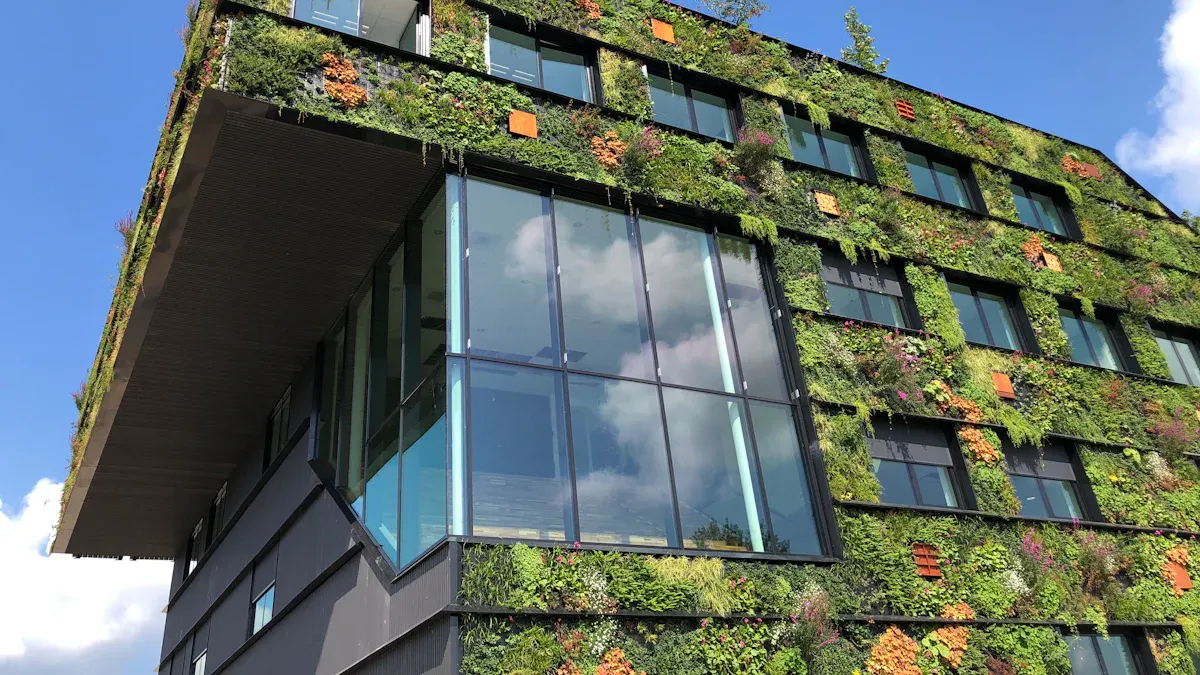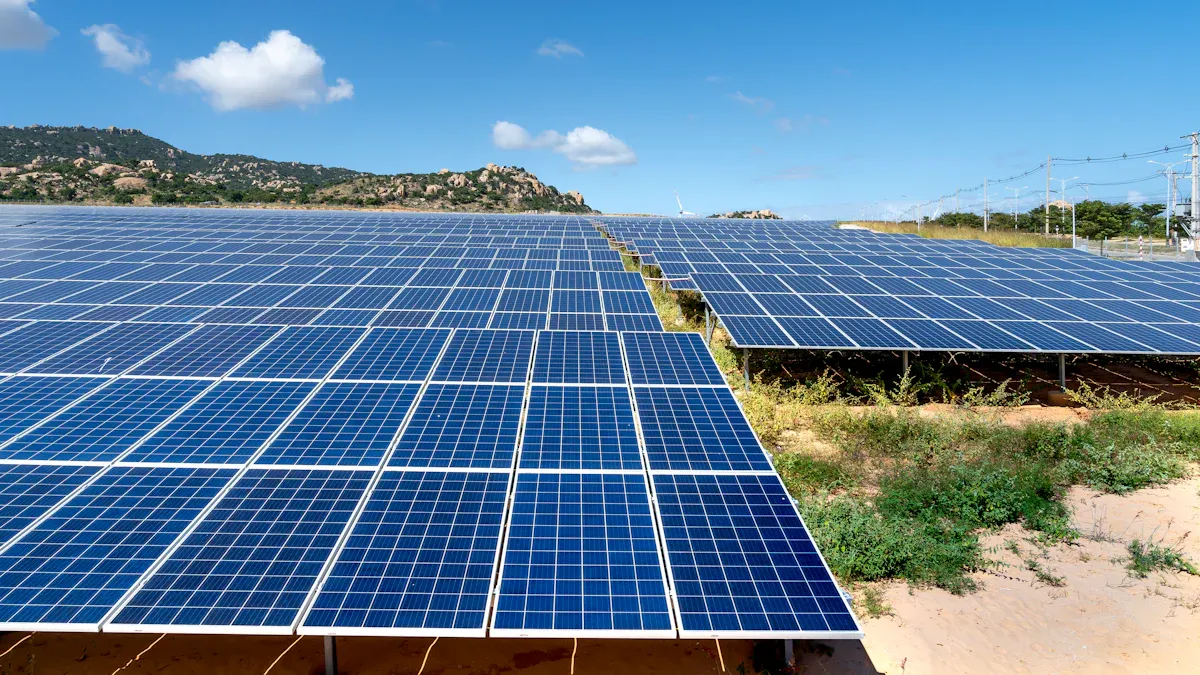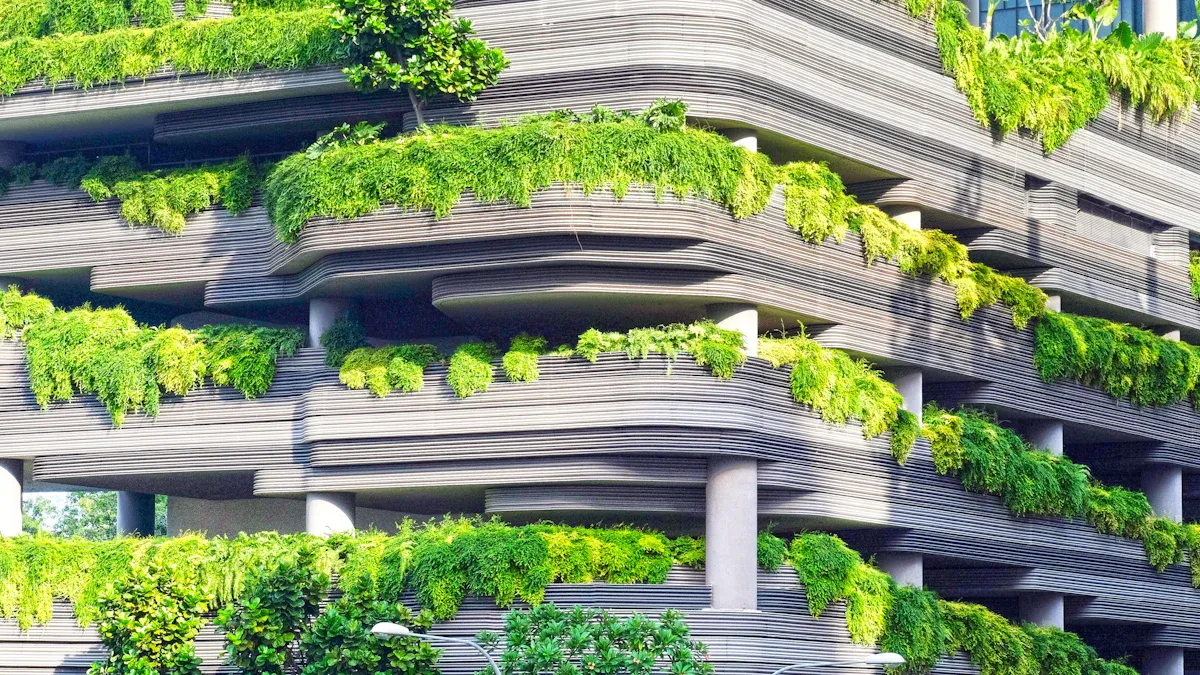
Energy-efficient Power Distribution Units play a pivotal role in optimizing energy use in green buildings. Top choices include APC by Schneider Electric Metered Rack PDU, Vertiv Geist Switched PDU, and Eaton ePDU G3 Managed. Data centers, consuming over 1% of global electricity, benefit significantly from these solutions. Lower Power Usage Effectiveness enhances sustainability, reducing environmental impact.
Key Takeaways
- Energy-saving PDUs use less power and lower costs by 20%.
- Smart tools like remote monitoring help manage energy and stop waste.
- Good setup and upkeep of PDUs keep them working well in green buildings.
Criteria for Selecting Energy-Efficient PDUs
Energy efficiency ratings and certifications
Energy efficiency ratings and certifications validate the performance and sustainability of a Power Distribution Unit. Certifications like UL ensure safety and performance through rigorous testing, reducing risks such as electrical shocks or fire hazards. CE Marking indicates compliance with EU regulations, making it essential for international projects. RoHS compliance ensures that products are free from hazardous materials, promoting environmental safety. These certifications not only enhance reliability but also align with green building standards.
| Certification | Description |
|---|---|
| UL Certification | Ensures safety and performance through rigorous testing. |
| CE Marking | Indicates compliance with EU health, safety, and environmental regulations. |
| RoHS Compliance | Guarantees products are free from hazardous materials. |
Scalability and adaptability for green buildings
Scalability and adaptability are critical for integrating PDUs into green buildings. A scalable Power Distribution Unit supports future growth without requiring significant infrastructure changes. Adaptable PDUs accommodate diverse energy needs, ensuring compatibility with legacy devices and eco-designed components. Establishing a baseline of typical energy usage helps identify inefficiencies. Benchmarking against vendor specifications and industry standards ensures optimal performance. Implementing energy-saving measures further enhances efficiency.
- Establishing a baseline of energy usage identifies inefficiencies.
- Benchmarking ensures compliance with industry standards.
- Energy-saving measures improve overall efficiency.
Advanced features like remote monitoring and control
Advanced features such as remote monitoring and control significantly enhance the functionality of PDUs. Intelligent PDUs, like those offered by Raritan, allow organizations to remotely access real-time power usage data and historical trends. This capability enables proactive energy management, such as powering off unused equipment to save energy. Features like dual-power inputs and network redundancy options ensure reliability, even in challenging environments. These innovations make PDUs indispensable for modern green buildings.
- Intelligent PDUs provide real-time power usage data.
- Remote control enables energy savings by powering off idle equipment.
- Backup mechanisms ensure uninterrupted operation.
Detailed Review of Top Energy-Efficient PDUs

APC by Schneider Electric Metered Rack PDU: Features, benefits, and use cases
The APC by Schneider Electric Metered Rack PDU stands out for its advanced monitoring capabilities. It provides real-time power usage tracking, enabling users to monitor critical metrics such as current draw and energy consumption. These features allow organizations to optimize energy distribution and reduce waste. Additionally, the inclusion of environmental sensors helps maintain optimal operating conditions by monitoring temperature and humidity levels.
One of the key benefits of this Power Distribution Unit is its modular design, which supports scalability. This makes it an excellent choice for data centers and green buildings that anticipate future growth. By investing in a scalable solution, organizations can avoid costly infrastructure upgrades while maintaining energy efficiency.
Use cases for this PDU include data centers, server rooms, and other facilities requiring precise energy management. Its ability to align with the goals of green building applications makes it a preferred choice for sustainability-focused projects.
Vertiv Geist Switched PDU: Features, benefits, and use cases
The Vertiv Geist Switched PDU offers a combination of flexibility and control, making it a valuable asset for green buildings. This PDU features remote monitoring and control capabilities, allowing users to manage power distribution from virtually anywhere. The ability to switch individual outlets on or off remotely enhances energy efficiency by eliminating unnecessary power consumption.
Another notable feature is its robust build quality, designed to withstand demanding environments. The Vertiv Geist Switched PDU also includes advanced security protocols, ensuring safe and reliable operation. These features contribute to its reputation as a reliable and efficient solution for modern facilities.
This PDU is particularly beneficial for facilities with diverse energy needs. It is ideal for managing power in multi-tenant data centers, colocation facilities, and other environments requiring precise control over energy distribution. Its adaptability ensures compatibility with various devices and systems, further enhancing its utility in green building applications.
Eaton ePDU G3 Managed: Features, benefits, and use cases
The Eaton ePDU G3 Managed delivers measurable outcomes in energy savings and operational efficiency. Users have reported energy savings of up to 20% and a reduction in downtime by 25% or more. These results highlight its effectiveness in optimizing energy use and improving reliability.
| Outcome | Measurement |
|---|---|
| Energy Savings | Up to 20% |
| Reduced Downtime | 25% or more |
This Power Distribution Unit includes advanced features such as outlet-level monitoring and control. These capabilities allow users to track energy consumption and identify inefficiencies at a granular level. The Eaton ePDU G3 Managed also supports network redundancy, ensuring uninterrupted operation even during power disruptions.
Its use cases extend to data centers, industrial facilities, and other environments where energy efficiency and reliability are critical. The PDU’s ability to reduce energy consumption and downtime makes it a valuable addition to any green building project.
Benefits of Using Energy-Efficient PDUs in Green Buildings

Energy savings and cost reduction
Energy-efficient Power Distribution Units (PDUs) significantly reduce energy consumption and operational costs in green buildings. Businesses adopting custom PDUs have reported up to a 20% reduction in energy costs within the first year. Real-time monitoring features allow organizations to identify inefficiencies and make informed adjustments, further optimizing energy use.
| Metric | Improvement |
|---|---|
| Energy consumption reduction | Up to 20% |
| Annual energy savings | $50,000 for a mid-sized data center |
Additionally, PDUs improve data center energy efficiency by 20%, enhancing Power Usage Effectiveness (PUE) through precise monitoring. These savings not only benefit the bottom line but also align with sustainability goals.
Reduced carbon footprint and environmental impact
By optimizing energy distribution, PDUs contribute to a lower carbon footprint. Reduced energy consumption directly translates to decreased greenhouse gas emissions, supporting environmental conservation efforts. For green buildings, this aligns with global sustainability standards and certifications.
Advanced features like outlet-level monitoring ensure that energy is allocated efficiently, minimizing waste. This proactive approach helps organizations meet environmental targets while promoting responsible energy use.
Tip: Implementing PDUs with remote monitoring capabilities can further reduce environmental impact by enabling energy-saving measures without on-site intervention.
Enhanced operational efficiency and reliability
PDUs enhance operational performance by enabling better energy management and allocation. Energy metering capabilities allow facilities to monitor usage patterns and allocate resources effectively. This ensures that critical systems receive uninterrupted power, reducing downtime and improving reliability.
- Intelligent PDUs provide real-time data for proactive energy management.
- Advanced features like network redundancy ensure continuous operation during power disruptions.
These benefits make PDUs indispensable for green buildings, where efficiency and reliability are paramount.
Tips for Implementing PDUs in Green Buildings
Proper installation and setup
Proper installation ensures the optimal performance of a Power Distribution Unit in green buildings. Following expert guidelines during assembly and wiring is essential. Electrical safety standards must be adhered to, and components should be wired according to schematic diagrams. Testing electrical connections and functionality before deployment minimizes risks.
The installation process requires selecting an optimal location that allows adequate clearance and ventilation. Using appropriate mounting hardware ensures stability and prevents damage. Thorough testing and validation of power distribution, circuit protection, and monitoring features confirm the system’s readiness. These steps establish a solid foundation for energy-efficient operations.
| Aspect | Best Practices |
|---|---|
| Assembly and Wiring | Follow safety guidelines, wire components as per diagrams, and test connections. |
| Installation and Mounting | Choose optimal locations, ensure ventilation, and use proper mounting hardware. |
| Testing and Validation | Verify power distribution, circuit protection, and monitoring features. |
Regular maintenance and monitoring
Routine maintenance and monitoring are critical for sustaining the efficiency of PDUs. Establishing a maintenance schedule helps identify and address potential issues before they escalate. Documenting wiring diagrams and specifications ensures that technicians can quickly resolve problems. Training staff on proper handling and troubleshooting enhances operational reliability.
Integrating remote monitoring capabilities allows real-time tracking of energy usage and system performance. Alerts for anomalies enable swift corrective actions, reducing downtime and energy waste. These practices ensure that PDUs continue to support the energy-saving goals of green buildings.
Optimizing PDU usage for maximum efficiency
Optimizing PDU usage involves leveraging advanced features to enhance energy efficiency. Outlet-level monitoring identifies energy-intensive devices, enabling targeted adjustments. Remote control capabilities allow users to power down idle equipment, reducing unnecessary consumption.
Implementing energy-saving measures, such as scheduling power distribution during off-peak hours, further improves efficiency. Benchmarking energy usage against industry standards helps identify areas for improvement. By maximizing the capabilities of PDUs, green buildings can achieve significant energy savings and operational benefits.
Energy-efficient Power Distribution Units, such as the APC by Schneider Electric Metered Rack PDU, Vertiv Geist Switched PDU, and Eaton ePDU G3 Managed, offer advanced features like real-time monitoring and remote control. These capabilities reduce energy wastage, lower operational costs, and align with sustainability goals. Intelligent PDUs also support carbon footprint reduction, meeting modern environmental standards.
Post time: May-10-2025

